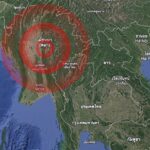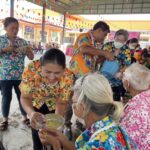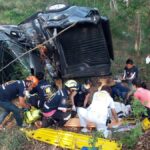On Sunday, the Road Safety Operation Centre reported that 30 people lost their lives, and 257 were injured in road accidents on the second day of the Songkran holiday, often referred to as the “seven dangerous days.” The total number of accidents on this day reached 459.
Saturday’s accidents caused 30 fatalities, an increase of three compared to the first day, with injuries rising to 257 from 201 the previous day.
Motorcycles remained the riskiest form of transport, accounting for 86% of all incidents. Most crashes were linked to speeding, followed by drunk driving, according to the centre’s data.
Bangkok recorded the highest number of fatalities at nine, while Lamphun reported three deaths. A significant portion of the accidents occurred on highways. Friday and Saturday marked the peak travel times, as people journeyed to their hometowns or vacation spots.
Justice Minister Tawee Sodsong mentioned in a press briefing that local roads would likely see more accidents in the coming days as travelers settle into their destinations and begin celebrating in their communities or tourist areas.
Highway police noted that return trips are expected to start on Tuesday, with traffic into Bangkok likely to hit its highest point on Wednesday. However, some travelers might extend their holidays by taking additional days off on Thursday and Friday, returning to work the following weekend.
Songkran’s Seven Dangerous Days
The “seven dangerous days” refers to the period during Thailand’s Songkran Festival, the traditional Thai New Year, celebrated annually from April 13 to 15, though some regions may extend the festivities. This period is notorious for a sharp rise in road accidents, injuries, and fatalities, driven by heavy travel, alcohol consumption, and water-related activities.
Why the Risks Are High
During Songkran, millions of people take to the roads to visit their families, leading to heavy traffic. Water fights, a key part of the celebrations, can distract motorists. Drunk driving is also a significant issue, despite the presence of checkpoints. In previous years, hundreds of deaths and thousands of injuries were reported, with motorbikes frequently involved due to reckless driving or lack of helmets.
Steps Taken for Safety
Authorities run a “Safe Songkran” campaign, including checkpoints to deter drunk driving, confiscating vehicles from offenders, and enforcing rules against speeding and riding without helmets. Some areas also create “White Songkran” zones, which are alcohol-free and family-oriented.
Cultural Context
Songkran is a time of joy, marked by water splashing to symbolize purification, visits to temples, and showing respect to elders. However, the lively celebrations, particularly in cities like Bangkok and Chiang Rai, often increase the chances of accidents.
Tips for Visitors
If you’re visiting during Songkran, consider avoiding driving altogether. Use public transportation or tuk-tuks instead. Keep your belongings in waterproof bags, stay hydrated, and follow local customs, such as avoiding splashing monks or elderly people.
The “seven dangerous days” serve as a reminder to celebrate responsibly and prioritize safety during this festive time.
Related News:
Songkran in Chiang Rai 2025: Experience the Spirit of Lanna Culture

Geoff Thomas is an award winning journalist known for his sharp insights and no-nonsense reporting style. Over the years he has worked for Reuters and the Canadian Press covering everything from political scandals to human interest stories. He brings a clear and direct approach to his work.














